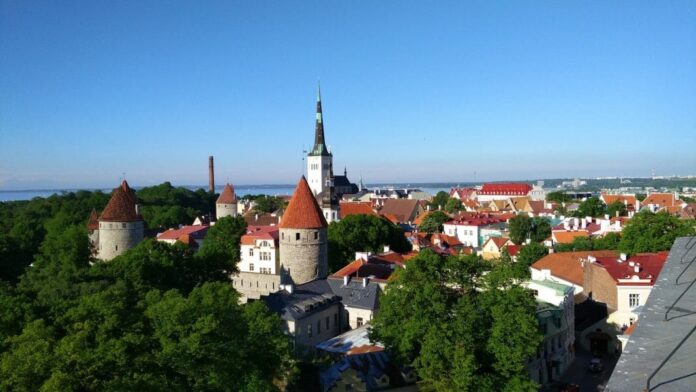With its cryptocurrency-friendly attitude and innovative tech industry, Estonia has established itself as the bitcoin leader in the Baltic area.
The Baltic region has always been a promising area wherein which cryptocurrency can flourish. The Baltic, which consists of Lithuania, Latvia, and Estonia, is significantly poorer than its Western European counterparts. However, the Baltic has experienced an economic boom in the last decade, partly thanks to bitcoin and other cryptocurrencies.
This is especially true in Estonia. Estonia, the birthplace of Skype, has always shown innovation in the IT industries. The tech-friendly attitude as well as the economic situation, has made Estonia the prime location to become a prominent bitcoin exchange market.
Other considerations also factor into Estonia’s cryptocurrency success. Firstly, it is extremely easy to open up a business in the country. In addition, gaining access to the government is equally easy. Expenses for opening an LLC equates to less than $10 000. Due to the convenience of the process, several firms carry the OÜ extension, which is the Estonian equivalent for LTD. The convenient Estonian registration process might also become more widely used in blockchain projects, such as the .io domains are already employing.
Many experts believe that Estonia and their Baltic neighbours could soon become leaders in the cryptocurrency industry. Currently, Russian authorities are employing a largely draconian regime when it comes to cryptocurrency regulation. Considering Estonia’s, proximity to the Russia, businesses, and traders will soon look towards the Estonian market to replace the gap left by the Russian market.
To make its position stronger, the Baltic area has a high concentration of bitcoin full nodes. The nodes are a confirmation of the region cryptocurrency knowledge.
Currently, Lithuania boasts with the most nodes at 66 nodes. This number competes with several other crypto-friendly countries such as the Ukraine, which has 80 nodes, Poland with 66 nodes, and the Czech Republic which has 65 nodes.
While these statistics can not yet compare with cryptocurrency leaders such as Japan, or the US, the numbers are indicative of the countries’ strong position in cryptocurrency. While Latvia only has 16 nodes, and Estonia 10, these countries have confirmed their cryptocurrency leadership in other ways.
In addition to bitcoin nodes, Lithuania also holds Monero nodes and three Litecoin nodes. While Estonia and Latvia both hold four Litecoin nodes respectively. This puts the area ahead of other tech-innovative countries such as Switzerland.
While comparing nodes alone cannot give us a comprehensive look at a country’s bitcoin future, it is a good indicator of possible success and dominance.
The area has also been experimenting with issuing their own cryptocurrency coins. Earlier this year, Estonia announced the creation of estcoin, a token based on an Ethereum principle. However, this coin received a lot of criticism, including that of Mario Draghi, the president of the European Central Bank, who was quick to remind Estonia that the official currency will remain the Euro.
Despite the criticism, Estonia continued to operate the e-residence program. Several experts believe that blockchain tokens can co-exist with fiat currency in the future if the currencies do not merge or cross into each other’s territory.
Given the openness of Estonia’s e-residency as well as the convenience of starting a business, Estonia has become the most sought-after options for start-ups. Currently, Estonia has less than 2 million residents, which means that they might choose to extend their e-residency to build a worldwide population of over 10 million people.
The e-residency could place Estonia as one of the main blockchain capitals of the world.
Estonia and the other Baltic states have managed to turn their biggest disadvantage into an attractive option for investors. The underdeveloped investment and finance sector, which previously was a burden, has now become a promising option for the cryptocurrency start-up option.
Image of Estonia from Pixabay here.
















